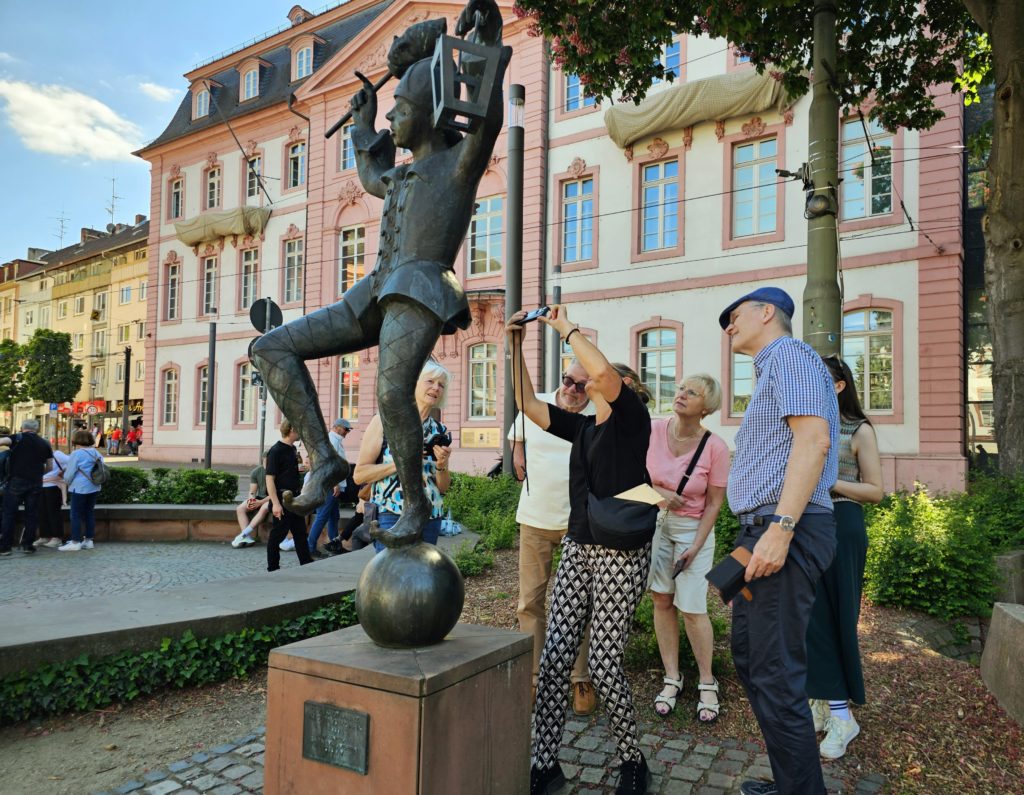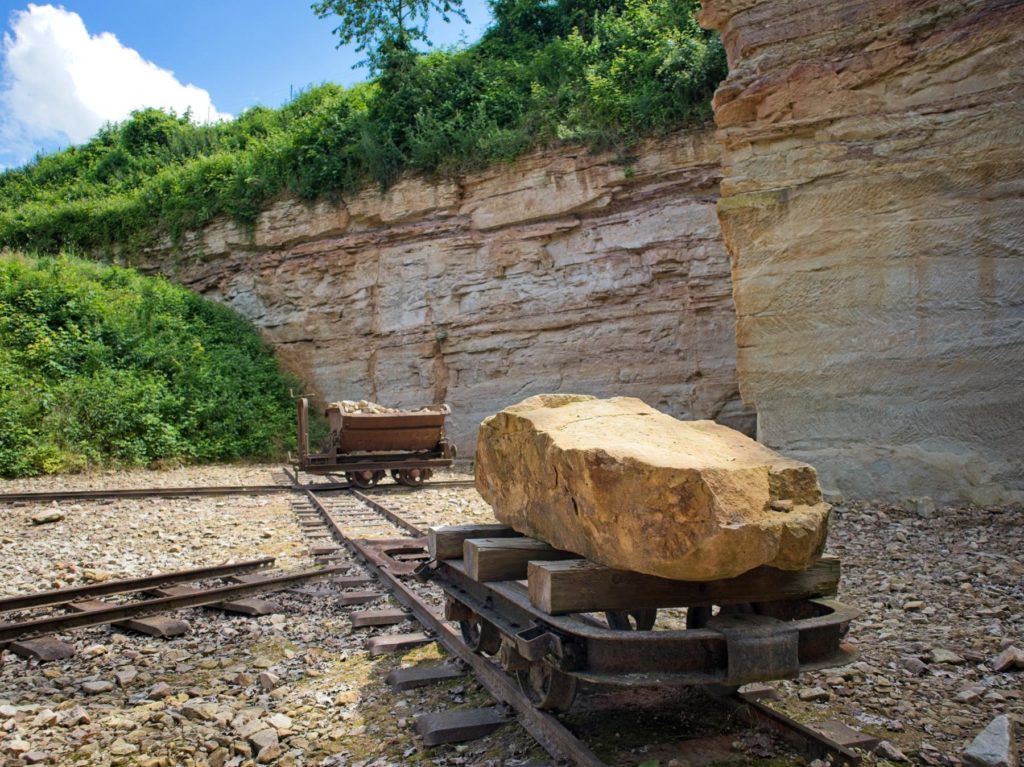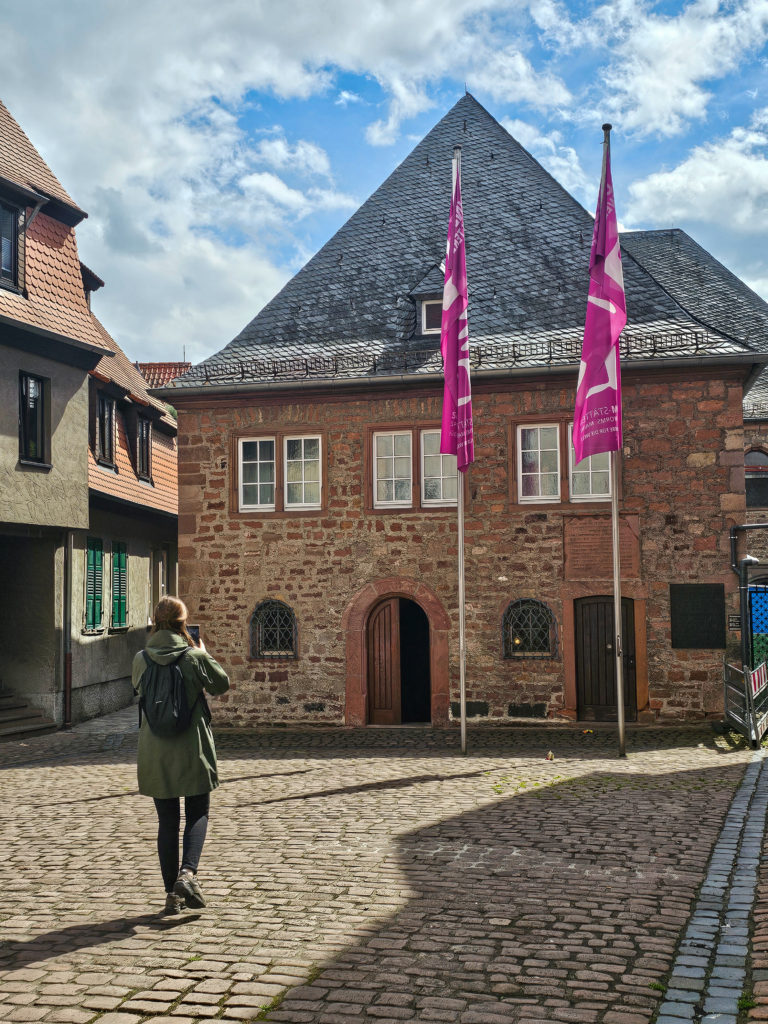Imposing backdrop
Imposing is already the backdrop of the Nibelungen Festival - they take place directly at the cathedral in Worms. The city of 85,000 inhabitants in Rheinhessen knows how to set its themes and celebrate festivals. Seventeen days in July and August were once again dedicated to Siegfried, Etzel, Gunther and Hagen, Kriemhild, Brunhild & Co, for the fourth time under the artistic direction of Nico Hofmann. Also this year he dared a premiere, because not the well-known saga was on the program, but rather its (possible) continuation: Siegfried's heirs. The play, which begins the day after the cruel slaughter at Hun King Etzel's court, was written by the author duo Feridun Zaimoglu and Günter Senkel, Roger Vontobel directed. Jürgen Prochnow stood on an open-air stage for the first time at the age of 77 and was convincing as the heavily drawn Etzel. The play, which lasts a good three hours, offers many opportunities to explore the themes of power and powerlessness, greed and revenge. Etzel wants to avenge the death of his youngest and last son, Brunhild (portrayed by Ursula Strauss) is heavily scarred by Siegfried's betrayal and the rape by Gunther. And everyone wants the Nibelungen treasure sunk in the Rhine: the Burgundians, the Dutch, the Huns as well ... All quite bloodthirsty and thoroughly muddy. But convincing. As was the music of the small string-instrument ensemble grouped around the Mongolian throat singer and horse-head violinist Enkhjargal Dandarvaanchig. His multi-octave singing was disconcerting at first, but fit perfectly with the stage action.
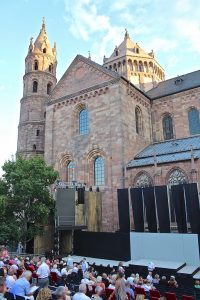

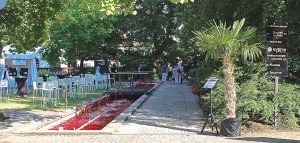



Worms knows how to stage itself: Before the performance, it is delicious to sit in the Heylshof Park food. This is accompanied by pleasant piano trio jazz - a good way to wind down from everyday life and arrive in the aura of Worms Cathedral and its past. It was built by the Staufers and consecrated in 1181. And because church buildings also go with the fashion, the south side and three chapels were changed and added to during the Gothic period. If you approach the city by car, the cathedral is visible from afar in the landscape and its four towers make it look almost like a crown. It is the smallest and probably also the finest of the three Romanesque imperial cathedrals on the Rhine (Speyer and Mainz).
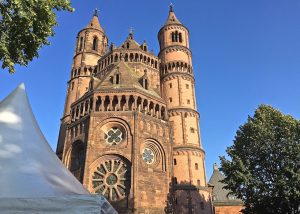
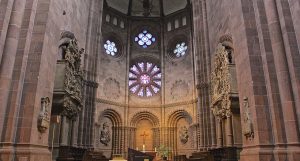


The protagonists of the Song of the Nibelungs (written around the year 1200 AD) accompany you through the city: as dragon sculptures, as the Wheel of Fate fountain on the Obermarkt, as the Hagen monument on the Rhine or in the multimedia Nibelungen Museum.

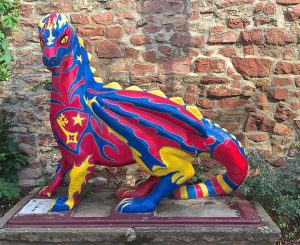
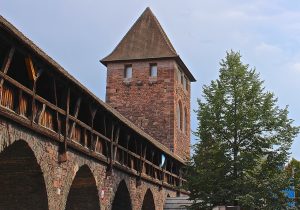
The history of Worms
Worms is one of the oldest cities in Europe, 7,000 years ago Celts settled the area, then the Wankions and finally for about 5 centuries the Romans. Around 600 AD, the Nibelungenlied refers to historical figures and events of that time. Brunichildis had a first Christian basilica built on the highest hill of the city, where temples and administrative buildings had previously stood. It was demolished in the year 1000, followed by the first cathedral, which was built in only 13 years under Bishop Burchard I, but was rebuilt by his successor Burchard II in the 12th century.
was also demolished and rebuilt. In 1181 the present Dom Since then, it has been one of the three famous Romanesque church buildings in Speyer, Mainz and Worms. In the Palatinate War of Succession in 1689, the city was completely destroyed. The Elector of the Palatinate died childless, his sister
was Lieselotte of the Palatinate and sister-in-law of the French King Louis XIV, who now thought he could claim the Palatinate for himself, against which, of course, the German princes were opposed. Louis IX tried to have the cathedral blown up - all the glass was broken, all the paintings and furniture burned down, but the cathedral itself remained standing. 100 years later Napoleon again destroyed the city, which had been rebuilt in the Baroque period. In the Museum of the City of Worms in the Andreasstift there is an extensive exhibition on the development of the city, from Neolithic times through the Romans to the Middle Ages.




Thanks to the highly respected leather industry (which invented patent leather) located in Worms and its income, Worms recovered quickly and continued to flourish. In February and March 1945, the city was destroyed to 90%, its center today consists mainly of buildings of the 1950s and 1960s.




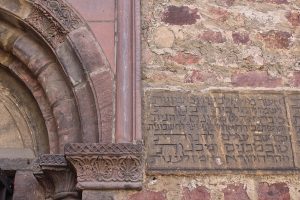
The Jewish quarter
Only in the former Jewish quarter time seems to have stood still: Here there are still narrow alleys and old-looking houses. Worms looks back on a thousand years of Jewish culture. At Rashi House, today's Jewish museum right next to the synagogue, which was rebuilt in the old style, there are numerous exhibits from many centuries as well as display boards and video material and special exhibitions.
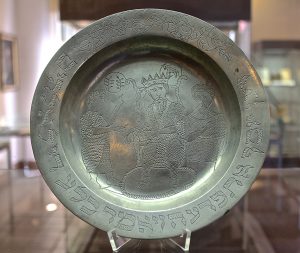
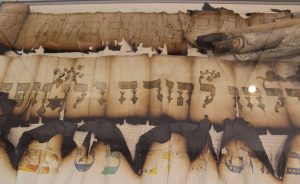

The Synagogue (consecrated in its original construction as early as 1034) probably had - like the other Romanesque churches in the city - the same master builder as the cathedral. In the Middle Ages, Worms, together with Speyer and Mainz, formed a Jewish community known for its Talmudic colleges and rabbinical conferences in Western Europe.
highly esteemed Jewish center, called "Jerusalem on the Rhine". In the Reichspogromnacht the synagogue was completely burned down, in 1960 it was rebuilt according to the old plans. The scholar Raschi (1040 - 1105), who is still revered today, lived and worked here. jewish
Museum is housed, nearby the Rashi Gate commemorates him and every year about 85,000 Jews from all over the world travel to his grave in the oldest Jewish cemetery in Europe, "Holy Sand". The oldest gravestone dates from 1076, but since the 1930s the sprawling site has not been
used more, because there was a new cemetery. Very unusual is that the cemetery faces south - all other Jewish cemeteries are "ossified", the reasons are unknown so far, although there are several theories about it. There are no floral offerings or burial mounds, rather stones are placed on top of
placed on the stone. This goes back to an old custom: in hot areas, people put many stones on the grave to prevent animals from digging up the body again. In 1933, 1,600 Jews lived in Worms; in 1939, Worms was reported to be free of Jews. Not one emigrated family returned. However, year after year, about 86,000 Jews from all over the world visit the cemetery and Rashi's grave. Worms, Speyer and Mainz as so-called SchUM Cities have recently applied for inclusion in the UNESCO World Heritage List.
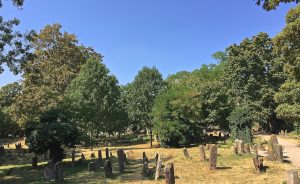
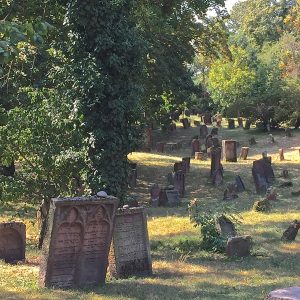
Martin Luther in Worms
Martin Luther's ten days in Worms are commemorated by a monument embedded in a small park. In April 1521, he was heard at the Diet of Worms - by then Pope Leo X had already imposed a church ban on him. Luther was given safe conduct by Charles V, but nevertheless refused to retract his writings to the bishop's court, citing his conscience. The next day, the king pronounced the imperial oath and Luther fled to Wartburg Castle near Eisenach. In 2021, Worms will celebrate "500 years of the Diet of Worms" with numerous events to commemorate the refusal to recant as the unfolding of freedom of conscience.
Shortly after the Nibelungen Festival, Worms continues to celebrate in the summer: The Music Festival Jazz & Joy has been offering music of different styles with artists from all over the world for 28 years. More than 20,000 visitors enjoyed the performances of 38 acts on five open-air stages for three days from the afternoon until late at night. In addition to power women such as Sarah Connor, Candy Dulfer or Stefanie Heinzmann, combos or bands such as the Volker Engelberth Quintett, the Tom Ibarra Group, the Hi-Fly Orchestra or up-and-coming German rappers with cello, Indianageflüster, were also part of the party.
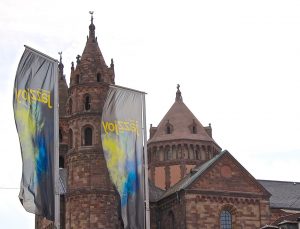



It is by no means reverent, rather the audience (also thanks to many and good culinary offers) enjoys the festival vibes in 360° mode. Songs from Chad were presented by Willy Sahel and Son del Nene brought Cuban swing à la Buena Vista Social Club to the hips of the people of Worms.
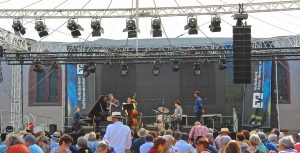

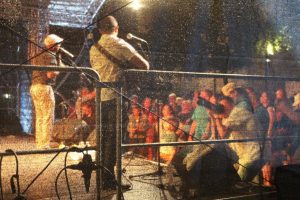
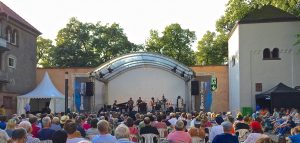

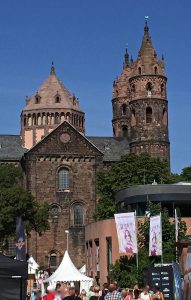
With their festival pass (optionally for one or all three days), visitors have the opportunity to enjoy the tried and true and at the same time make new musical discoveries. Accompanying the festival are a children's program, discussion forums and jazz services. Worms loves to celebrate, and so next year's date has already been set: in 2019, Jazz & Joy will take place from August 16 to 18. Following the Nibelungen Festival, in other words.
I would like to thank the Rhineland-Palatinate Tourism GmbH sincerely for the cooperation. The content of the article was not influenced. #RLExperience #EnjoyDuell

